Surveyor - Utilities - Job Demand Analysis
| Division | Infrastructure Projects and Engineering |
| Branch | Technical, Design and Engineering |
| Assessment locations | GSRI Site 14, Condobolin Road, Angus Bridge, Molong Creek, Macquarie Road |
| Publication date | 21/05/2025 |
Role summary
The Utility Surveyor manages internal and external utility location and Surveying resources on TfNSW projects, to deliver a program of survey services and advice. The role also assists in the management and auditing of professional services contracts and supports in the development and deployment of utility location capability and expertise required to manage current and future technical risk in Transport for NSW projects.
Key accountabilities include:
- Contribute to infrastructure projects, by providing expertise in survey and utility location services and technical advice to project management teams in the investigation, development and/or construction stages.
- Develop and maintain project relationships, by direct consultation and negotiation with clients, relevant stakeholders and external contractors engaged.
- Develop, implement and oversee program of works with multiple external contractors engaged to deliver most projects.
- Ensure the integrity of project technical data, by auditing both in-house and external products against the scope of works, technical criteria and quality management systems.
- Mentor Surveyors in training plus aspiring utility locators
- Review of technical documents
Typical field duties require various physical and psychosocial demands dependent on the site being surveyed and may require extended hours of work including night works. Surveyors mostly work with others (however rarely may work alone) and are required to carry multiple pieces of equipment around the site. The work site can vary from metres to kilometres in radius and onsite tasks can involve multiple hours of surveying over a singular shift or more likely several days/nights.
Exposure To Critical Risks
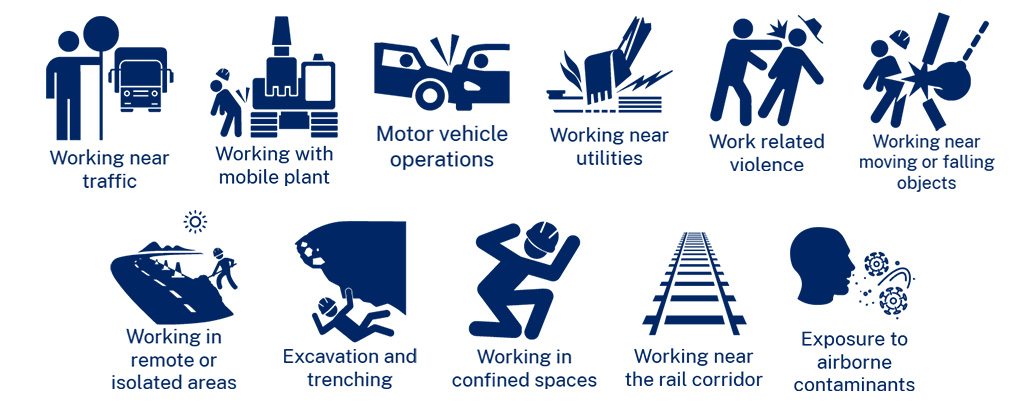
Task Demand Summary
Task | Physical | Psychological | Environmental |
|---|---|---|---|
Computer-based admin / data entry - 30% |
|
|
|
Rural Surveying - 17% |
|
|
|
Urban surveying - 17% |
|
|
|
Driving / Regional Travel - 16% |
|
|
|
Site set up and Pack up - 10% |
|
|
|
Ground Penetrating Radar - 10% |
|
|
|
Overall Demand |
|
|
|
Whole Job Physical Demands Summary
| Physical demands | Frequency1 | Comments | ||||
|---|---|---|---|---|---|---|
1. Whole Body Movement | ||||||
| N | R | O | F | C | ||
| Sitting | X | Computer workstation seated and sitting long periods in vehicle travelling to sites. | ||||
| Standing | X | Frequently across work zone while locating utilities. | ||||
| Walking | X | Regularly traversing site. | ||||
| Kneeling/squatting | X | Accessing pits and locating utilities | ||||
| Climbing - Ladder | X | |||||
| Climbing - Stairs | X | Access to office/ depot | ||||
2. Lower Back Movement | ||||||
| N | R | O | F | C | ||
| Bending forwards | X | Marking of site, reading tripod levels, accessing gear from truck. | ||||
| Stooping | X | To mark utility locations and clear site when needed. | ||||
| Bending backwards | X | |||||
| Twisting/side bend | X | May be required when navigating uncleared and difficult sites. | ||||
3. Neck Movement | ||||||
| N | R | O | F | C | ||
| Flexion | X | Locating and marking utilities and looking for obstacles. | ||||
| Extension | X | Checking access and visual field for obstructions. | ||||
| Rotation | X | Checking for traffic, obstructions, surroundings and checking blind spots. | ||||
4. Upper Limb Movement | ||||||
| N | R | O | F | C | ||
| Wide grip | X | Carrying of equipment and site set up and steering wheel operation. | ||||
| Fine grip | X | Mouse and keyboard use, documentation in notepad and equipment dial operation when indicated. | ||||
| Forward reach | X | Accessing gear from truck managing site obstructions and steering wheel operation. | ||||
| Overhead reach | X | Removal of tree branches and other obstacles. | ||||
| Side reach | X | Accessing pits when required. | ||||
5. Weights and Forces | ||||||
| N | R | O | F | C | ||
| Floor (kg) | 25 | Equipment loading from storage to vehicle and site. | ||||
| Bench (kg) | 25 | |||||
| Shoulder (kg) | 10 | |||||
| Above shoulder (kg) | 10 | |||||
| Carrying - Unilateral (kg) | 25 | Carrying gear eg scanner case between sites and vehicle. | ||||
| Carrying - Bilateral (kg) | 20 | Carrying equipment | ||||
| Pushing (kg) | 25 | Clearing site and operating ground penetrating scanner. | ||||
| Pulling (kg) | 25 | Clearing site and operating ground penetrating scanner. | ||||
1: Never 0%; Rare 1 - 5%; Occasional 6 - 33%; Frequent 34 - 66%; Constant 67 - 100%
Whole Job Psychological Demands Summary
| Psychological demands | Frequency1 | Comments | ||||
|---|---|---|---|---|---|---|
1. Quantitative Demands | ||||||
| N | R | O | F | C | ||
| Fast work pace or significant time pressure | X | Once a site is set up and disruptions to public/traffic or utility supply there is time pressures to complete the task. | ||||
| Low job autonomy/control | X | Manage own work load and pace. | ||||
| Repetitive or monotonous tasks | X | Setting up, detailing and reading instruments repetitive in nature, Nature of driving long distances can also be monotonous. | ||||
| Minimal training/education available | X | |||||
| Minimal tools/resources available | X | |||||
2. Cognitive Demands | ||||||
| N | R | O | F | C | ||
| Requirement to keep focus on multiple items at once | X | Accuracy of data is important/ exact measurement required at all times. | ||||
| Requirement for sustained attention/vigilance | X | Data entry requires alertness for accuracy of data collection and reporting. Workers must maintain vigilance when operation vehicle on roads. | ||||
| Requirement to make difficult or quick decisions | X | |||||
3. Emotional Demands | ||||||
| N | R | O | F | C | ||
| Exposure likelihood to traumatic events | X | |||||
| Customer facing or interacting with the public | X | Regularly observed by the public and mindful of interactions and potential action of members of the public. | ||||
| Requirement to hide emotional feelings | X | |||||
| Requirement for working in isolation | X | |||||
1: Never 0%; Rare 1 - 5%; Occasional 6 - 33%; Frequent 34 - 66%; Constant 67 - 100%
Whole Job Environmental Demands Summary
| Environmental demands | Frequency1 | Comments | ||||
|---|---|---|---|---|---|---|
1. Physical Environment | ||||||
| N | R | O | F | C | ||
| Uneven, sloped or slippery terrain | X | Site dependent, every site is different and requires ongoing evaluation. | ||||
| Hand Arm Vibration | X | Hand tools occasionally required for removal of vegetation and hammering of pegs and star pickets | ||||
| Whole Body Vibration | X | Very poor road access can be encountered. | ||||
| Poor lighting | X | Some sites require night work to avoid busy times and traffic. | ||||
2. Elemental Exposure | ||||||
| N | R | O | F | C | ||
| Working in heat (>30C) | X | Dependent on site, season and project demands | ||||
| Working in cold (<10C) | X | |||||
| Emergency weather conditions/events | X | Workers may be caught in unanticipated emergency conditions whilst driving between sites. | ||||
3. Hazardous Exposure | ||||||
| N | R | O | F | C | ||
| Dust or other airborne contaminants | X | Data entry can be completed in the field or office. Car and other urban pollutants can be near by, Rural site variations. In addition to potential high risk substances such as asbestosis and crystalline silica. | ||||
| Noise | X | Traffic and other environmental noise, Occasionally near major highways or construction projects eg concrete drills, saws, non destructive digging, potholing and vacuum excavation | ||||
1: Never 0%; Rare 1 - 5%; Occasional 6 - 33%; Frequent 34 - 66%; Constant 67 - 100%
Task 1: Computer-based admin / data entry - 30%
Physical demand | Psychological demand | Environmental demand |
|
|
|
Task Description
- Requires surveyors to enter and upload all technical data from USB's and onsite collection platforms on to computer and programs.
- Extensive periods of time at computer based workstation reviewing plans and data analysis and cross-checking.
- Requires review and auditing of both in-house and external products against the scope of works and technical criteria and quality management systems
- Job planning, preparation and data processing and analysis attended to at the office.
Key Demands
Sitting (C), Twisting/side bend (O), Rotation (O), Fine grip (C), Fast work pace or significant time pressure (O), Repetitive or monotonous tasks (C), Requirement to keep focus on multiple items at once (O), Requirement for sustained attention/vigilance (O), Dust or other airborne contaminants (O)

Task 2: Rural surveying - 17%
Physical demand | Psychological demand | Environmental demand |
|
|
|
Task Description
Utility Surveyor is required to prepare site for safety zoning to assist the Engineering Surveyor team in mapping utility locations before earth works. This can include utilising contractors to excavate areas to assess underlying utilities.
The equipment used and surveying equipment/ techniques are the same as Urban surveying.
Physical and psychological demands differ due to the environment and physical demands of each different work site and changing obstacles and / or hazards.
Key Demands
Kneeling/squatting (O), Twisting/side bend (O), Rotation (O), Requirement for sustained attention/vigilance (O), Exposure likelihood to traumatic events (R), Uneven, sloped or slippery terrain (F), Working in heat (>30C) (O), Working in cold (<10C) (O), Dust or other airborne contaminants (O), Noise (O)

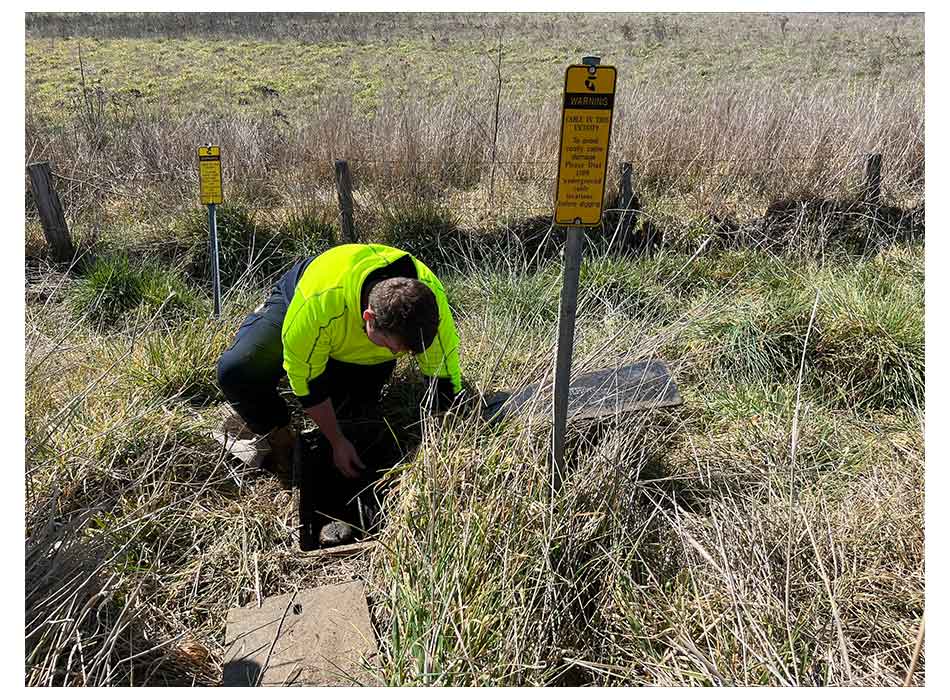
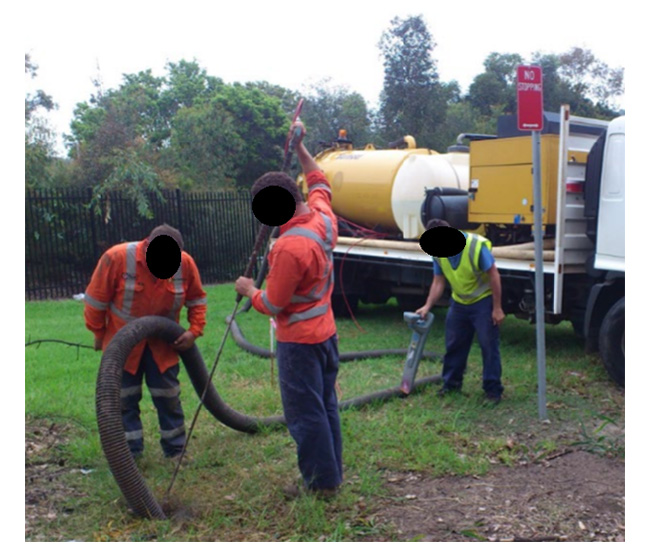
Task 3: Urban surveying - 17%
Physical demand | Psychological demand | Environmental demand |
|
|
|
Task Description
Utility surveyors provide expert technical advice and survey services to infrastructure projects and project development teams particularly in the investigation and planning stage of any development and/or construction project. The utility surveyor is responsible for locating various services (gas, water, sewer, communications, electricity etc) and providing safe working zones for other workers eg project engineers or Surveyors to then carry out their work.
The services are located using differing apparatus and equipment, methods and computing skills. This can include utilising contractors to excavate areas to assess underlying utilities.
Key Demands
Climbing - Ladder (O), Climbing - Stairs (O), Rotation (O), Requirement to keep focus on multiple items at once (O), Requirement for sustained attention/vigilance (O), Exposure likelihood to traumatic events (R), Working in heat (>30C) (O), Working in cold (<10C) (O), Noise (O)

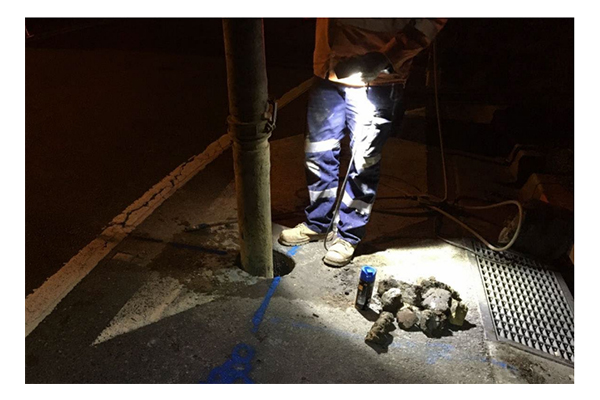
Task 4: Driving / Regional Travel - 16%
Physical demand | Psychological demand | Environmental demand |
|
|
|
Task Description
- Workers are always required to travel in a work vehicle and transport their equipment to access sites/locations.
- Average travel time for workers usually ranges from 1-3 hours a day.
- Workers may also be required to drive for extended periods to reach remote locations
Key Demands
Sitting (C), Rotation (F), Wide grip (C), Forward reach (C), Repetitive or monotonous tasks (C), Requirement to keep focus on multiple items at once (O), Requirement for sustained attention/vigilance (F), Requirement to make difficult or quick decisions (O), Exposure likelihood to traumatic events (R), Requirement for working in isolation (O), Emergency weather conditions/events (R)

Task 5: Site set up and Pack up - 10%
Physical demand | Psychological demand | Environmental demand |
|
|
|
Task Description
Surveying equipment (not stored permanently in vehicle) must be loaded into vehicle at office base from storage area dependent on each project. Once onsite, preparation work includes responsibility for safety of service within the work zone.
The site will determine surveying methodology, personnel, equipment, tools and consumables required onsite. Equipment and tools required are obtained from the vehicle, located to mark the site for safety and surveying requirements and returned to vehicle/ office once completed.
Equipment used can include:
- battery powered drills/ grinders, sledgehammer, shovels, crow bar, concrete chisels and vegetation clearing tools and mechanical/ pneumatic tools if required.
- GNSS (Global navigation satellite system) Rover Survey controller, pit lifters, flexi-rods and earth rods where needed
- Gas detectors, ground penetrating radar and other surveying equipment depending on site requirements
Key Demands
Kneeling/squatting (O), Stooping (O), Extension (O), Rotation (O), Fast work pace or significant time pressure (O), Exposure likelihood to traumatic events (R), Uneven, sloped or slippery terrain (O), Hand Arm Vibration (O), Working in heat (>30C) (O), Working in cold (<10C) (O), Dust or other airborne contaminants (O), Noise (O)
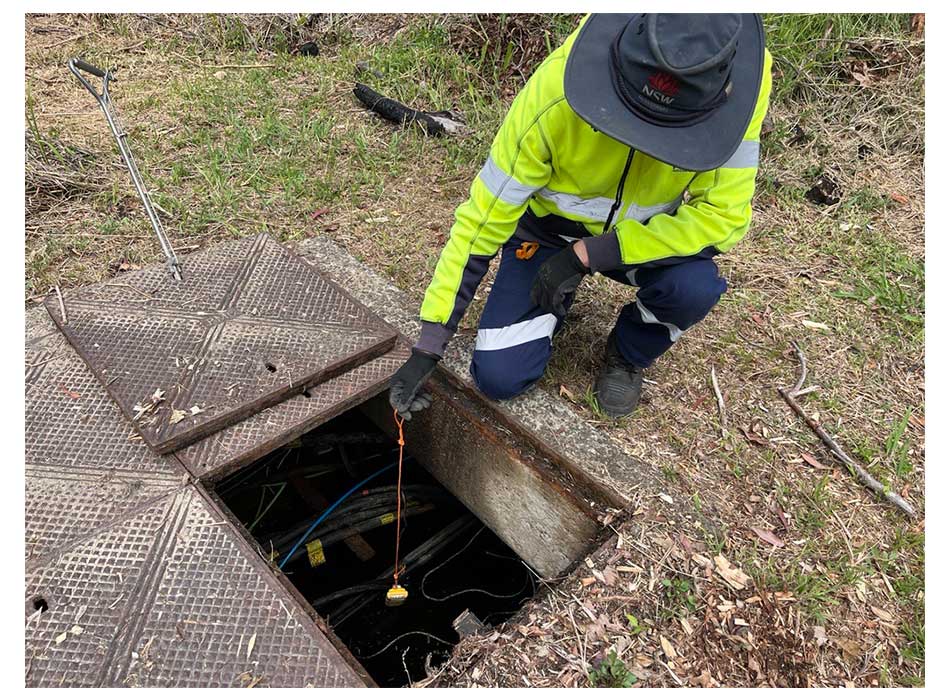
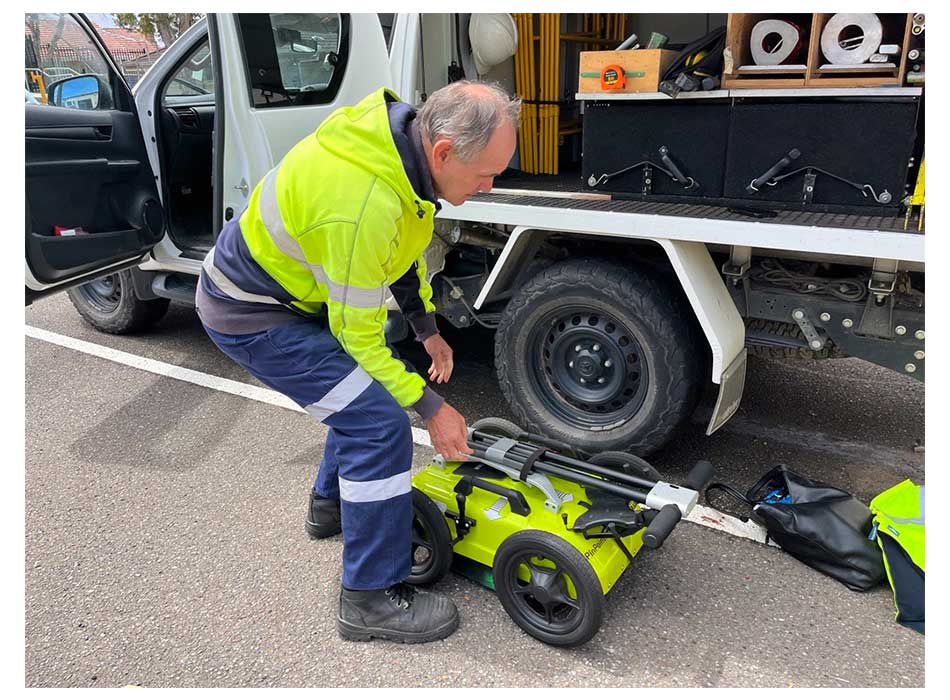
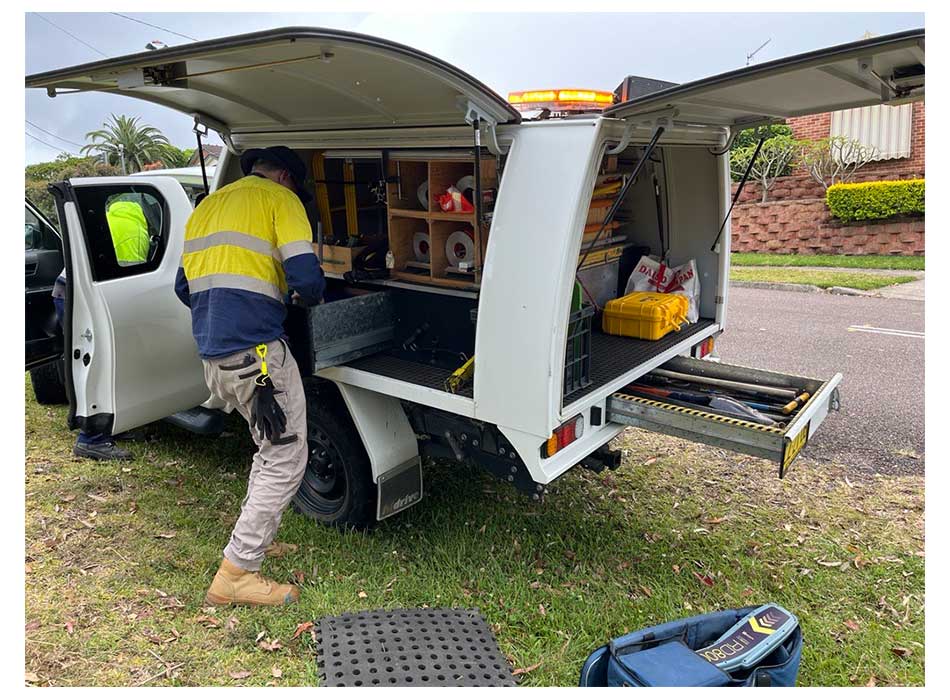
Task 6: Ground Penetrating Radar - 10%
Physical demand | Psychological demand | Environmental demand |
|
|
|
Task Description
Scanning requires the Surveyor to push/pull the ground penetrating radar (cart type) to collect accurate data for mapping and real time analysis of underground utilities over large areas.
Accessing the scanner in/out of vehicle requires lifting of awkward size/weight device.
Key Demands
Kneeling/squatting (O), Stooping (O), Twisting/side bend (O), Flexion (C), Rotation (O), Wide grip (C), Requirement to keep focus on multiple items at once (O), Requirement for sustained attention/vigilance (O), Uneven, sloped or slippery terrain (O), Working in heat (>30C) (O), Working in cold (<10C) (O), Dust or other airborne contaminants (O)

Key information
Demand rating is calculated via an algorithm based upon the relative weighting and frequency of the physical, environmental and psychological sub-tasks (e.g. squatting has a higher weighting than standing or walking).
This data may vary depending on production rates, changes in design or work organisation and staffing levels. This report was prepared by a trained and qualified health and safety professional within the TfNSW Occupational Health Team and reviewed by relevant Health and Safety, and operational stakeholders.
JDAs are periodically updated by the TfNSW Occupational Health Team or sooner where significant changes have been identified. For the latest version of this JDA, please always refer to this link rather than saving an offline copy.
For further information please contact occupational.health@transport.nsw.gov.au.
